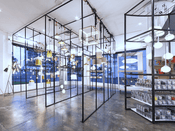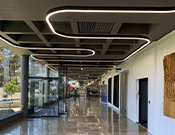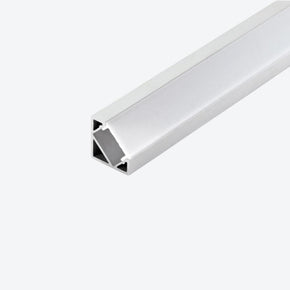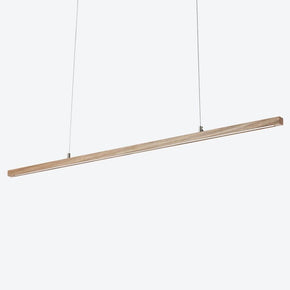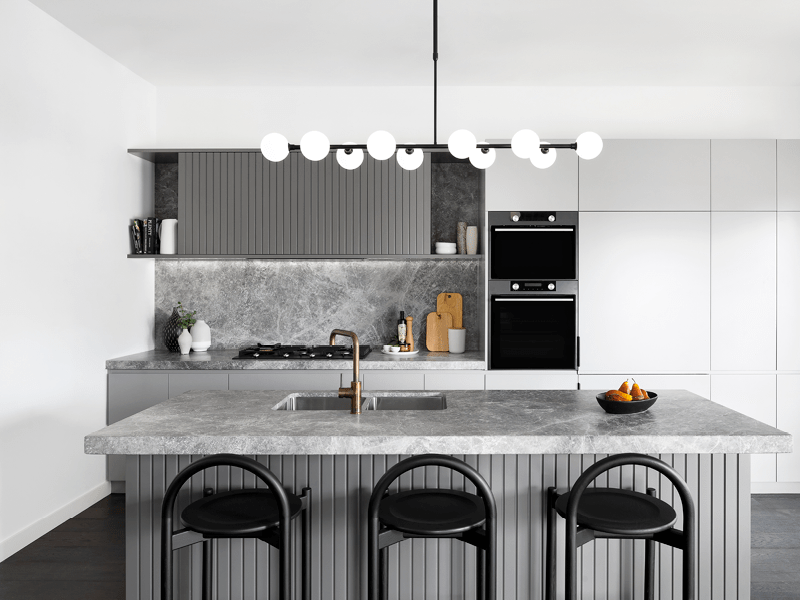- No products in the cart.
- ``
The link between Lighting and Learning
23
Jun
Ever wondered why most offices and classrooms are filled with either an abundance of natural light or bright lighting? Both our natural and built environments affect how we think and feel - and it’s something scientists have been studying for decades.
Lighting plays a huge part in the brain’s ability to focus. In fact, a number of studies show that in brightly lit environments students get higher grades than those in dimly lit rooms.
Poor lighting has the potential to reduce the brain’s ability to function at it’s best. While full-spectrum lighting (similar to natural light) assists in reducing anxiety and stress, improving behaviour and can even benefit overall health.
It’s not as simple as it might seem though. Overhead, traditional cool-white fluorescent lighting may actually interfere with a students ability to read words on paper or a whiteboard, and the glare this results in known as veiling reflection may actually negatively impact learning.
Lighting and the circadian rhythm
When evaluating the lighting of any classroom or learning space, there are two biological systems - the visual and the circadian - which should be considered. The circadian rhythm is the body's biological clock which repeats at approximately 24-hour intervals.
Humans are driven by this internal clock, which is most strongly influenced by the solar light-dark cycle. The circadian rhythm regulates many parts of our bodily function, including hormone release, eating habits and body temperature. Remaining in bright spaces throughout the day helps our body remain in rhythm, and keeps us at our most alert.
While bright light helps us be our best in the day, It’s also important to have minimal light exposure at night. Light and in particular blue-light emitted by screens can hinder learning. This happens as blue-light exposure close to bedtime disrupts sleeping patterns and students can be left sleeperier and less able to learn the following day.
Daytime blue-light exposure improving learning
Parts of the human eye connect directly to the part of the brain responsible for secreting hormones that influence our level of alertness including melatonin (making us sleepy) and cortisol (making us more alert).
While it’s true that almost any form of light can influence hormone secretion, blue light has the most significant effect. People become less sleepy when exposed to blue light as opposed to other wavelengths. Digital screens, full-spectrum LEDs and sunlight are all rich in blue light.

Blue light has a wavelength of between approximately 380nm and 500nm. This makes it one of the shortest, highest-energy wavelengths visible to the human eye. Image source
It’s possible that blue-light exposure may have the most significant effect on those aged between 10 and 19 in particular. When navigating puberty the body experiences a number of biological changes that make it harder to fall asleep early, and harder to wake up in the morning. This means during these years we’re most likely to accumulate sleep debt which can negatively impact academic performance.
While later school start times may help adolescents during this period, it’s not entirely realistic this is going to happen. To assist in creating better sleep habits, blue light exposure throughout the day (and none in the lead up to sleeping) can help to reset the body’s circadian rhythm, improving alertness and academic performance.
Studies have confirmed some of the hypotheses scientists have had with regard to blue light and learning. A study in the US of 21,000 high school students showed that over a one year period students who were exposed to more sunlight during the day had 26% higher reading outcomes and 20% higher math outcomes than pupils in less sunny rooms.
It’s not all dependent on natural light though. Other studies suggest that replacing artificial lighting with blue-enriched lighting can improve student’s cognitive processing speed and concentration. Not all days year round will be sunny, and not all classrooms will be fortunate to be filled with lots of natural light. Consulting lighting specialists to achieve a hybrid is key.
How to best light classrooms, learning spaces, offices and more
We all want the best for our students, colleagues and people close to us. Lighting spaces appropriately plays a huge part in helping people to do their best work. Here’s some recommendations we have that you may like to consider when lighting a learning space, office or study:
- Using sensors to detect daylight levels you can have your lighting automatically adjust it’s output level to create the right balance. This also provides energy savings.
- Studies suggest that lighting may play an important role in overall human health and well-being through the circadian system. Consulting a lighting specialist can help to ensure your spaces are best lit.
- The design of lighting systems should be based on task, school room configurations, layout, and surface finishes. These factors can all impact one another and can create glare which can hinder learning potential. In some settings, window treatments may also be necessary to control excessive sunlight.
Among the recommended illuminance levels, studies indicate that the following are appropriate for visual performance:
- Desks (300-500 lux on a desktop)
- Whiteboard (500 lux on a vertical surface)
- Corridors (100 lux on the floor)
- Art rooms (500 lux on a desktop, 300 lux in the vertical plane)
A CRI (Colour Rendering Index) of 80 for fluorescent lighting systems is also appropriate to make objects appear natural so pupils have an accurate interpretation of what surrounds them.
Ready to improve the quality of your learning spaces?
We know how much care and thought goes into facilitating an environment for students to be their best. Finding a lighting solution that provides the best opportunity for pupils to reach their potential isn’t an easy task.
If you need advice on which lighting solutions can complement your school, office, or learning space get in touch with the About Space team. We can guide you through what’s required to make the most of your space.








